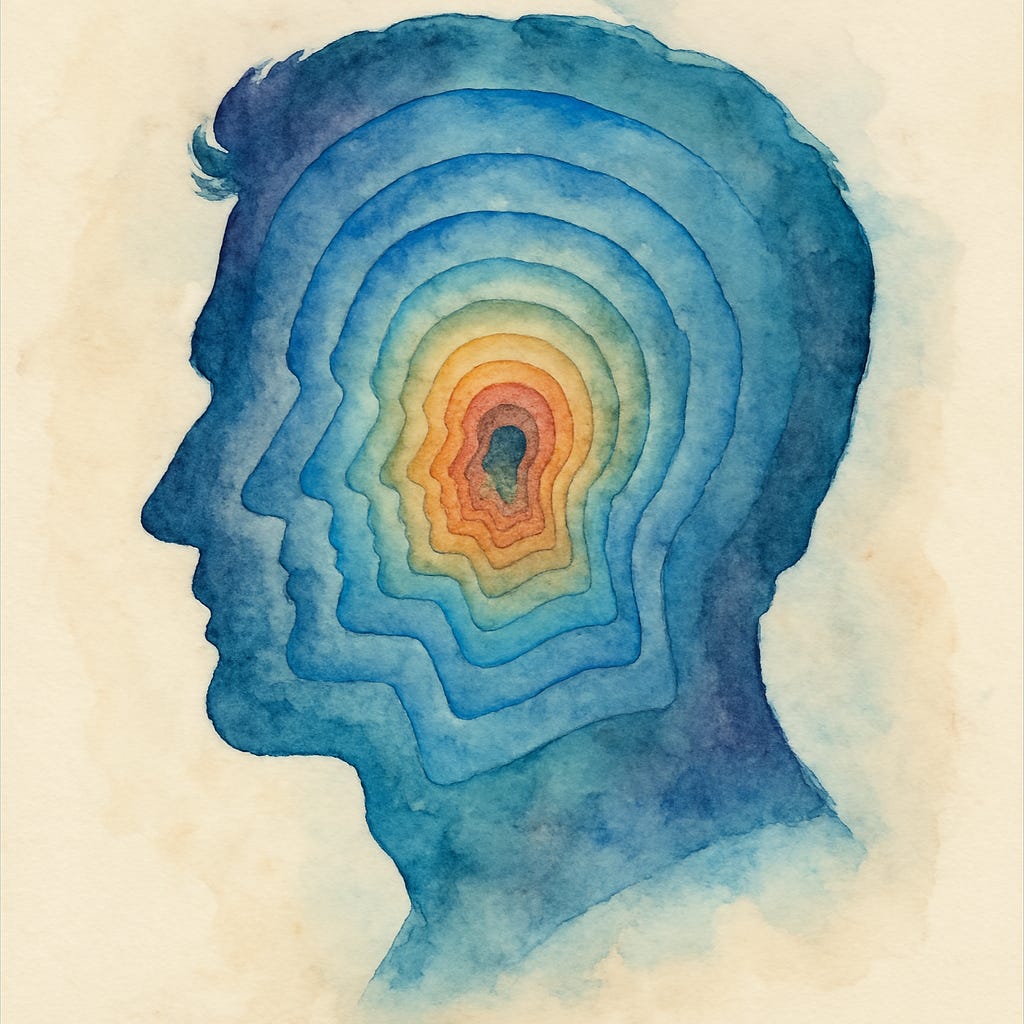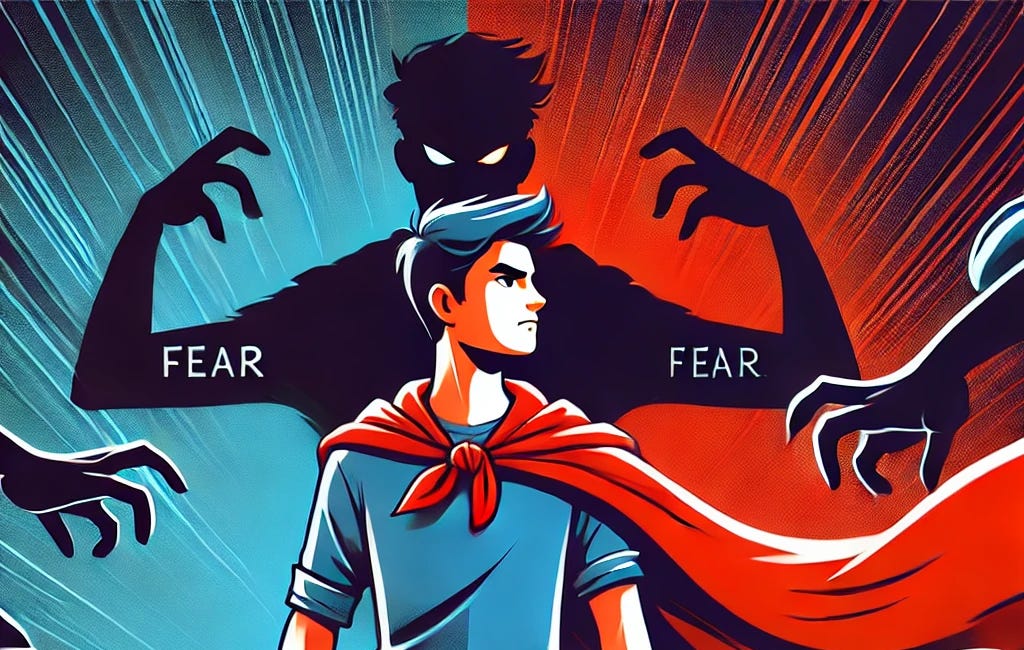The World, According to Us
How the stories we tell shape our personality, relationships, and freedom
Mind Candy is a newsletter on practical philosophy and human flourishment—aka how to live “the good life.” Each month we tackle a new theme.
This month’s theme is Story.
Each of us has an amazing ability that no one else in the world can replicate, and that’s our ability to view the world through our own eyes.
Each and every one of us can only experience the world through our own reality and can never truly see the world from another’s. This was famously summarized by Descartes in his phrase, Cogito, ergo sum, or, "I think, therefore I am.”
These lenses in which we view the world are what the psychologist Brian Little has called constructs. Each of us have these "personal constructs," which are, in theory, “cognitive goggles you use to understand yourself and others.”
“Your personal constructs serve as both frames and cages. They can provide some predictable paths through life's complexities, but they can also lock you into a rigid way of thinking about yourself and others.”
They are the stories and rules we set down in our lives to make sense of the world. These constructs are the narratives we live by each and every day. They dictate why we act a certain way, or why we feel a certain way. They even shape how much freedom we have in the world.
The more we experience life, the more constructs we build. As Little explains, the more constructs we have, the easier it is for us to better understand the world because we have multiple frames of reference.
These stories come about and apply to our lives in several ways.
You notice them during periods of change
Life is filled with experiences. Depending on when that experience is had in one’s lifetime determines how we may view the experience.
For example, when a child becomes a parent themselves, they may come to understand and respect their own parents differently now that they are experiencing parenthood with all its highs and lows, successes and challenges. Whereas they may have looked upon parenting through the lenses of their childhood, now they become reoriented to view the world through both being a child and being a parent, thus seeing the experience more fully.
As we progress through life and we’re presented with more responsibility, we naturally come to see the world differently. And in turn, these new constructs provide new lenses to view the world.
Your relationships are measured by your constructs
Everyone has a personality, but we judge others’ personalities based upon the constructs we’ve made.
It’s not simply about liking or not liking someone’s personality, it’s about experiencing their personality through these stories we have built.
As Little explains, “our impressions of others' personalities are routed through our personal constructs, and these are dynamic, complex, and potentially revisable. Although we might believe that our impressions of others are cool, rational readings of the objects of our construal, personal constructs are frequently hot, emotional expressions of something far deeper.”
Depending on what stories we’re telling at any given time, we may treat someone in our lives differently.
Constructs are tied to our personal sense of self
“Threat is the awareness of an imminent change in one's core personal constructs.”
Constructs can be both long (the length of time we’ve had them) and central (a core pillar of our identity).
Each of these constructs build our mental maps of the world and when challenged can feel like an attack on who we are.
“If you have a construct system that is primarily centered around one core construct, this means that you have very little wriggle room when that construct is challenged. In other words, to the extent that you have an overly dominant core construct along which much of your construing is organized, you have limited degrees of freedom in navigating your world.”
In order to truly flourish in the world, we need the ability to see events and people from multiple angles. By limiting our experiences, our interactions, or actions, we limit how many different constructs we have the ability to build.
Life is meant to be experienced. It brings about knowledge which can only be learned directly. These moments are the fruits of life. It is why saying ‘yes’ to life is so important. Through each and every experience—good, bad, and ugly—we are presented with opportunities that teach us more about the world, and in turn, ourselves.
Once we understand this, we’re in a better position to begin updating the stories we tell. By understanding these stories are malleable and not set in stone, we give ourselves the opportunity to update the stories that are limiting, or that no longer work for us.
Life is filled with opportunities for growth and the stories we tell ourselves are just one area.
Each of these constructs builds our worldview. These worldviews then help us decide how we interpret and respond to our events.
Once we begin to see these constructs, once we see and trace our constructs origins, we are better able to change them, when needed, and add to them.
By doing so, we not only provide ourselves a deeper understanding of experience, we are better prepared for life’s many twists and turns.
Before you go…
If you enjoyed the above article, you may be interested in this:
Learning to Embrace Discomfort
Mind Candy is a newsletter on practical philosophy and human flourishment—aka how to live the “the good life.” Each month we tackle a new theme. This month we’re exploring fear.
Thank you for reading Mind Candy. If you enjoyed this work, please consider upgrading to a paid subscription. Or if now isn’t the right time, please share to someone who could benefit.
Until next time,
D.A. DiGerolamo
We are a participant in the Amazon Services LLC Associates Program, an affiliate advertising program designed to provide a means for sites to earn advertising fees by advertising and linking to Amazon.com.








